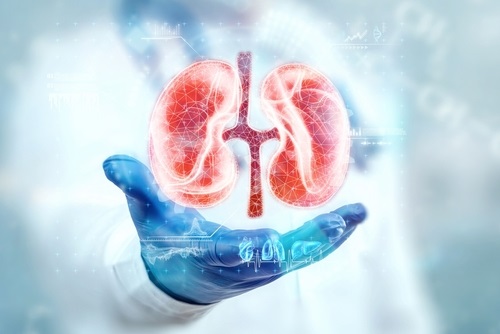Research technology could improve care for patients with kidney disease
By Celine Zadorsky
In a newly published study, scientists at Lawson Health Research Institute have adapted PET/MRI technology to accurately image salt within the kidneys of patients with kidney disease.
“Salt is very difficult to image in an MRI because the signal is much weaker than water,” explains Dr. Christopher McIntyre, Lawson Scientist and Nephrologist at London Health Sciences Centre (LHSC). “We wanted to find a way to look at the fundamental role of the kidney in getting rid of salt and water by using a functional MRI.”
Imaging salt within the kidneys has never been accurately accomplished in patients with kidney disease, but Dr. McIntyre and his team developed new technology and software that was adaptable to a PET/MRI machine at St. Joseph’s Health Care London. The new technology allowed the machine to image salt and water levels within the kidney.
“Salt within the kidneys have only been imaged in pre-clinical models, and low weight, healthy volunteers,” says Dr. McIntyre. “Since the kidney is further away from the MRI coils, and the organ moves when a person breathes, it is definitely very hard to image.”
This was the first study to use MRI to look at salt within the kidneys with a wide range of participant with different body types (10 healthy volunteers), as well as patients with kidney disease (five patients). The research team also imaged patients who had a combination of kidney disease and heart failure, because it is especially important for those patients specifically to be able to release salt and water as part of their treatments.
Currently clinicians rely on kidney biopsies to measure salt levels, but Dr. McIntyre says that method isn’t as accurate or effective as it could be.
“The problem is that the biopsies are painful, they have risks, and because it is a small sample of the kidney, we don’t get an accurate perspective of the kidney as a whole,” Dr. McIntyre explains.
The study, which is published in Radiology has now opened the door to new possibilities when it comes to clinical care for patients with kidney disease.
“Salt is very toxic in patients with kidney failure,” adds Dr. McIntyre. “This will now allow us to diagnose and manage both chronic and acute kidney disease. It is a significant step forward.”
The next steps for the research team will be to compare salt MRI’s to biopsies, while also examining potential new therapy developments.
“We are hoping we will have a higher degree of certainty moving forward to predict what will happen within the kidneys of these patients, with the possibility of using new targeted and effective treatments in the future,” notes Dr. McIntyre.
Celine Zadorsky is a Communications Consultant at Lawson Health Research Institute.




